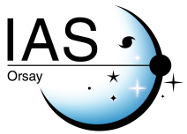He-like Ions as Practical Astrophysical Plasma Diagnostics: From Stellar Coronae to Active Galactic Nuclei
| Titre | He-like Ions as Practical Astrophysical Plasma Diagnostics: From Stellar Coronae to Active Galactic Nuclei |
| Type de publication | Journal Article |
| Year of Publication | 2010 |
| Auteurs | Porquet, D, Dubau, J, Grosso, N |
| Journal | Space Science Reviews |
| Volume | 157 |
| Pagination | 103-134 |
| Date Published | Dec |
| ISBN Number | 0038-6308 |
| Numéro d'accès | WOS:000288172200008 |
| Résumé | We review X-ray plasma diagnostics based on the line ratios of He-like ions. Triplet/singlet line intensities can be used to determine electronic temperature and density, and were first developed for the study of the solar corona. Since the launches of the X-ray satellites Chandra and XMM-Newton, these diagnostics have been extended and used (from C v to Si xiii) for a wide variety of astrophysical plasmas such as stellar coronae, supernova remnants, solar system objects, active galactic nuclei, and X-ray binaries. Moreover, the intensities of He-like ions can be used to determine the ionization process(es) at work, as well as the distance between the X-ray plasma and the UV emission source for example in hot stars. In the near future thanks to the next generation of X-ray satellites (e.g., Astro-H and IXO), higher-Z He-like lines (e.g., iron) will be resolved, allowing plasmas with higher temperatures and densities to be probed. Moreover, the so-called satellite lines that are formed closed to parent He-like lines, will provide additional valuable diagnostics to determine electronic temperature, ionic fraction, departure from ionization equilibrium and/or from Maxwellian electron distribution. |



